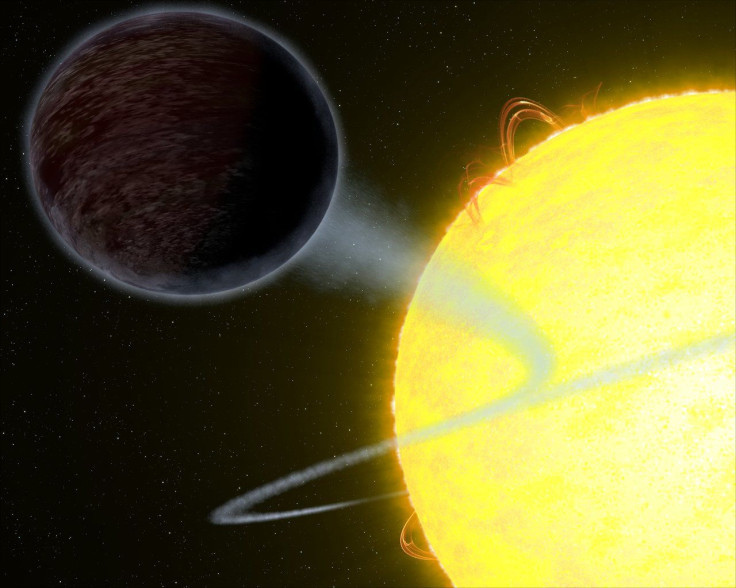NASA Shines Light On ‘Pitch Black’ Planet, A Scorching Hot World

A planet 1,400 light years from Earth reflects such little light from its host star that it looks “pitch black,” scientists have reported.
The darkness reveals information about WASP-12b’s atmosphere and shows it to be unique compared to other exoplanets of similar size. According to the European Space Agency, it took an eclipse of the planet to measure its brightness — scientists fired up the Hubble Space Telescope and waited for WASP-12b to pass behind its star, then measured how much light it reflected back into space, a quality known as its albedo.
Experts can use albedo to learn about the composition of a planet’s atmosphere, because different ingredients reflect light differently.
In the case of this exoplanet, the amount of reflected light at every optical wavelength is so low that it is “darker than fresh asphalt,” researcher Taylor Bell said in the ESA statement.
The astronomer from McGill University was the lead author of a paper describing the dark conditions. Its maximum albedo value of 0.064 makes it half as reflective as Earth’s moon. For comparison, Earth’s albedo is 0.37 and the albedo of Enceladus, an ice-covered moon of Saturn, is 1.4, making it the brightest body in the solar system.
WASP-12b does send out light in one way, however: It’s so hot that it glows red.
“The low albedo shows we still have a lot to learn about WASP-12b and other similar exoplanets,” Bell said.
Similar exoplanets would include others in the class of WASP-12b, known as “hot Jupiters.” They get their name from their size and their distance from their host stars — they are roughly as big as Jupiter but our Jupiter is in the cold outer solar system, far away from the sun, while these exoplanets are so close to theirs that they are scorched.
WASP-12b is about twice as large as Jupiter and completes an orbit around its star in a little more than a day.
“Because it is so close to its parent star, the gravitational pull of the star has stretched WASP-12b into an egg shape and raised the surface temperature of its daylight side to [4700 degrees Fahrenheit],” the ESA explained.
That tremendous temperature might be why it’s so unreflective. Its atmosphere it so hot that it starts to mimic the atmosphere of a small star.
“There are other hot Jupiters that have been found to be remarkably black, but they are much cooler than WASP-12b,” Bell said. “For those planets, it is suggested that things like clouds and alkali metals are the reason for the absorption of light, but those don’t work for WASP-12b because it is so incredibly hot.”
According to the study, the low albedo suggests that WASp-12b has an atmosphere with atomic hydrogen and helium — as opposed to molecules of those elements.
The authors said the findings show “the great diversity among hot Jupiters.”
© Copyright IBTimes 2024. All rights reserved.




















